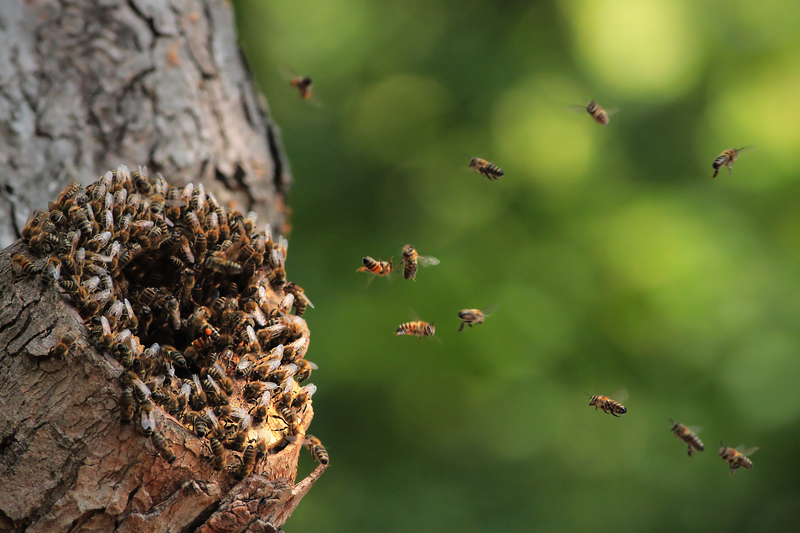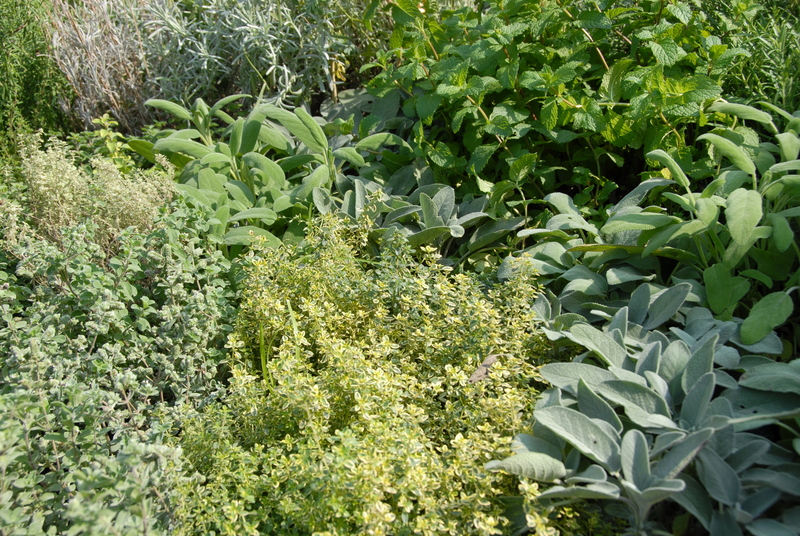The Future of Urban Horticulture: Container Gardening
Posted on 28/05/2025
The Future of Urban Horticulture: Container Gardening
Urban horticulture is transforming our city landscapes, fostering green spaces in the most unlikely places. As urbanization continues to accelerate, the ability to grow plants and food within city environments has become not only a hobby but also a necessity. Container gardening, in particular, stands out as an innovative and highly adaptable approach to urban horticulture. Whether on balconies, rooftops, patios, or window sills, future-minded gardeners are utilizing containers to maximize their greening potential. In this comprehensive guide, we'll explore how container gardening is shaping the future of urban horticulture and empowering city dwellers across the globe.
Why Urban Horticulture Matters
Urban horticulture is far more than a passing trend--it is a vital solution to many challenges faced by modern cities, including:
- Limited space: As cities grow, private gardens become scarce.
- Food security: Urban agriculture, including container gardening, supplements food supply.
- Environmental benefits: Plants help purify air and reduce urban heat.
- Community well-being: Green spaces enhance mental health and promote social interaction.
In this context, container horticulture is playing a pivotal role in making urban spaces more livable and sustainable.

Understanding Container Gardening: A Modern Urban Solution
Container gardening involves growing plants in pots, tubs, or any type of vessels instead of directly in the ground. This approach offers a range of benefits that make it especially well-suited for urban environments:
- Mobility - Easily move plants to optimize sunlight exposure and protect them from adverse weather.
- Space efficiency - Perfect for small patios, balconies, and rooftops where traditional beds aren't feasible.
- Creative flexibility - Mix and match colors, shapes, and plant types for inspiring designs.
- Pest management - Containers can be less vulnerable to ground-dwelling pests.
Thanks to these advantages, container gardening is rapidly becoming the cornerstone of urban horticulture's future.
The Evolution of Container Gardening in the Urban Landscape
Technological Innovations
Smart Gardening has taken root in cities. Innovations such as self-watering containers, sensor-driven irrigation systems, and compact LED grow lights enable thriving gardens in the smallest of spaces.
Key advancements include:
- Automated watering systems to maintain optimal soil moisture with minimal human input.
- Vertical gardening kits that maximize vertical spaces, transforming walls and fences into lush gardens.
- Lightweight, eco-friendly containers made from recycled materials.
- Integrated hydroponics and aquaponics systems for high-yield, soil-less cultivation.
Design Trends Shaping the Future
Modern container gardening is as much about aesthetics as it is about productivity. Urban horticulturists are focusing on:
- Modularity: Stackable and rearrangeable pots for dynamic layouts.
- Functional art: Unique pots and planters serve as statement pieces.
- Compact edible gardens: Growing herbs, berries, and dwarf vegetables in small containers.
- Sustainable watering: Utilizing drip irrigation and rainwater collection directly into containers.
Benefits of Container Gardening in the Urban Environment
The growth in container-based horticulture is fueled by significant benefits:
Accessible and Inclusive
Container gardening lowers the barriers to entry for urbanites of all skill levels. It's perfect for:
- Renters: Containers can move with you to a new home.
- Those with limited mobility: Raised containers reduce the need to bend or kneel.
- Children and seniors: Containers offer a manageable and safe introduction to horticulture.
Environmental Resilience
- Urban biodiversity: Containers attract pollinators and bring beneficial insects into the city.
- Heat reduction: Planted containers help cool urban microclimates.
- Stormwater management: Container soil can absorb rainfall, reducing runoff.
Food Security and Local Nutrition
Growing one's own produce in containers increases access to fresh, nutritious food. Herbs, salad greens, tomatoes, peppers, and even dwarf fruit trees flourish in pots, providing urban dwellers with healthy options right at home.
Technologies Powering the Future of Urban Container Gardening
Smart Irrigation and Water Conservation
Water is a precious resource in dense urban settings. Self-watering containers are becoming increasingly accessible, with features like:
- Water reservoirs: Save time, conserve water, and prevent overwatering.
- Soil moisture sensors: Automate watering based on plant needs.
- Drip irrigation systems: Efficiently deliver water directly to plant roots.
Vertical Container Gardening Systems
Making the most of vertical spaces means city dwellers can expand their gardens upward. Modular tower gardens, hanging planters, and wall-mounted containers allow for:
- Maximizing limited square footage
- Creating privacy screens
- Enhancing building aesthetics
Sustainable and Recycled Materials
Environmental awareness is driving demand for eco-friendly containers. Today's market includes:
- Bamboo planters
- Recycled plastic pots
- Biodegradable containers
- Repurposed items like buckets, crates, and pallets
These sustainable options keep waste out of landfills and give rise to creative, personalized garden spaces.
Key Considerations for Successful Container Gardening
Choosing the Right Containers
Container choice directly affects plant health and aesthetic appeal. Key factors include:
- Size: Bigger is generally better for root growth.
- Drainage: Ensure containers have holes to prevent waterlogging.
- Material: Terracotta, plastic, metal, and fabric offer different benefits and drawbacks.
Soil and Nutrition
High-quality potting mix is vital in urban container gardening. Adding slow-release fertilizer and organic matter supports sustained plant health. Many urban gardeners explore organic solutions and composting to enhance soil fertility.
Sunlight and Placement
Each plant species has its own light requirements. Urban gardeners often:
- Rotate containers to optimize sunlight exposure
- Use wheels or dollies for mobility
- Employ grow lights in low-light conditions
Plant Selection: The Urban Gardener's Palette
From ornamentals to edibles, container gardens can support a surprising diversity:
- Herbs: Basil, mint, parsley, thyme
- Salad greens: Lettuce, spinach, arugula
- Vegetables: Tomatoes, peppers, eggplants (dwarf or patio varieties)
- Fruit: Strawberries, blueberries, dwarf citrus
- Flowers: Pansies, petunias, marigolds, succulents
Urban Horticulture Trends: What Lies Ahead
Community Engagement and Shared Gardens
Community-driven container gardening projects are springing up on apartment rooftops, public parks, and schools. These projects:
- Promote social inclusion
- Provide hands-on educational opportunities
- Encourage local food production and sustainability
Integration with Smart Cities
The future of urban horticulture lies at the intersection of nature and technology. Smart city initiatives are incorporating green infrastructure by:
- Installing air-quality sensors in public gardens
- Combining container gardens with solar panels and rainwater harvesting
- Digitally mapping urban biodiversity via citizen science apps
Edible Cities and Urban Agriculture Networks
Many cities are developing policies to support urban agriculture networks, which include everything from individual container gardens to large rooftop farms. These developments are increasing local food security and resilience against global supply chain disruptions.
Overcoming Challenges in Urban Container Horticulture
Climate and Microclimate Concerns
City environments often exhibit temperature extremes and pollution. Mitigation strategies include:
- Grouping containers: Protect plants from wind and overheating
- Providing shade cloths during intense heat
- Choosing pollution-tolerant species
Pest and Disease Management
Urban container gardens still face threats from:
- Insect pests and mites
- Fungal diseases in humid microclimates
Sustainable pest control methods, such as introducing beneficial insects or using organic sprays, are recommended over harsh chemicals.
The Environmental Impact of Container Gardening
Urban Cooling and Carbon Sequestration
Even small-scale container gardens make measurable differences. They:
- Absorb carbon dioxide
- Reduce city heat through transpiration
- Mitigate the heat island effect
Reducing Waste and Supporting Circular Economies
Repurposing containers and composting plant waste encourages a more circular urban economy. Container horticulture champions resourcefulness and creativity, reducing consumption and landfill waste.
How to Get Started with Urban Container Gardening
Step-by-Step Guide
- Assess your space - Identify available locations: balcony, window, rooftop, patio, or indoor area with light.
- Select appropriate containers based on available space and desired plants.
- Choose high-quality soil and an organic fertilizer or compost source.
- Plan your layout - Group plants by sunlight and watering needs.
- Monitor and adjust - Watch for pests, check moisture, and rotate as needed.

Frequently Asked Questions on Container Gardening
Is container gardening suitable for beginners?
Absolutely. It's one of the most beginner-friendly methods of urban horticulture. Start small, learn as you grow, and expand your garden as confidence builds.
What is the best soil for containers?
Use premium potting mix, ideally blended with organic matter like compost. Avoid using heavy garden soil, which can compact and hinder drainage.
Can you grow fruit trees in containers?
Yes, dwarf and patio varieties of fruit trees are bred specifically for containers. Citrus, figs, and even apples can thrive in large pots with proper care.
How can I ensure my container garden is sustainable?
Choose eco-friendly pots, organic soil amendments, and practice water conservation. Composting kitchen waste and reusing old containers further boosts sustainability.
A Glimpse into the Future: Container Gardening Leads the Urban Green Revolution
Urban horticulture is evolving at breakneck speed, and container gardening is at the forefront of this exciting transformation. As cities seek resilience, sustainability, and beauty in limited spaces, container gardening provides innovative solutions for every urban dweller.
The emerging trends, from smart technology and sustainable design to community engagement, indicate that container gardening will only become more integral to urban life in years to come. It's a movement that fosters food security, environmental stewardship, and social belonging--all from a simple pot or planter.
If you're ready to be part of the future of urban horticulture, there's no better time to start a container garden. Whether you grow herbs on a sunny windowsill or fill your rooftop with edible greenery, you'll be contributing to a healthier, more vibrant cityscape--one container at a time.

